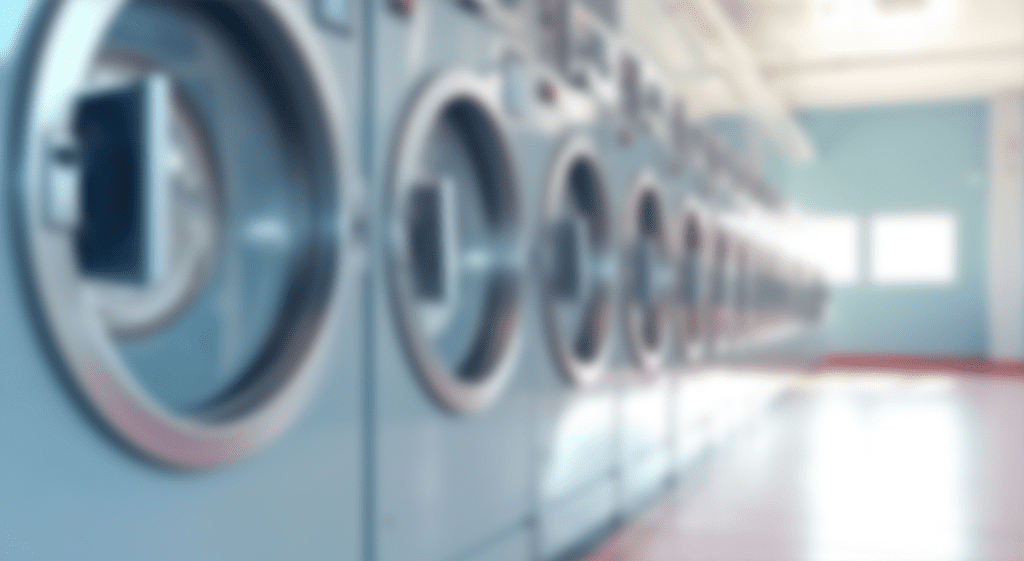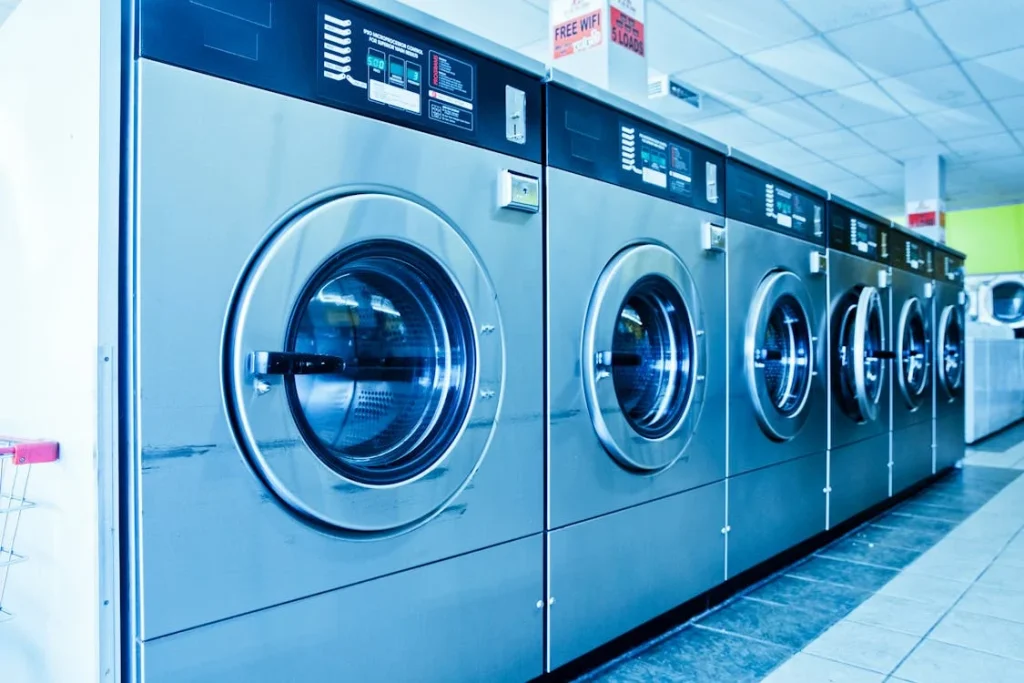Have you ever wondered how those massive washing machines in laundromats or industrial settings work? Well, it all starts with a proper installation. In this guide, we’ll walk you through the step-by-step process of an industrial washing machine installation.
Table of Contents
- 1. Introduction
- 2. Pre-Installation Checklist
- 3. Step-by-Step Industrial Washing Machine Installation Process
- 4. Industrial Washing Machine Installation Testing and Commissioning
- 5. Troubleshooting Common Issues
- 6. Industrial Washing Machine Installation Maintenance and Care
- 7. Conclusion
- 8. Key Takeaways for Industrial Washing Machine Installation
- 9. Call to Action
- 10. FAQs about Industrial Washing Machine Installation
1. Introduction
Before that, we’re going to share the basic introduction of industrial washing machines.
1.1. Importance of Industrial Washing Machines
Industrial washing machines are essential for businesses that handle large volumes of laundry, such as hospitals, hotels, and commercial laundromats. These machines are designed to handle heavy-duty loads efficiently and effectively.
1.2. Benefits of Proper Industrial Washing Machine Installation
A properly installed industrial washing machine can provide several benefits, including:
- Optimal performance: Correct installation ensures the machine operates at peak efficiency.
- Longer lifespan: Proper installation helps prolong the machine’s lifespan.
- Reduced maintenance costs: Well-installed machines require less maintenance and repairs.
- Improved safety: A properly installed machine minimizes the risk of accidents.
1.3. Challenges of DIY Installation
While it may seem tempting to install an industrial washing machine yourself, it’s important to note that it can be a complex task. Improper installation can lead to serious problems, including damage to the machine, water leaks, and electrical hazards.
2. Pre-Installation Checklist
Before diving into the installation process, it’s crucial to ensure you’re prepared. Here’s a pre-installation checklist to streamline the process:
2.1. Site Selection
- Space requirements: Industrial washing machines are significantly larger and heavier than their residential counterparts. Carefully review the machine’s specifications to ensure your designated laundry area has ample space for the machine itself, as well as clearance for hoses, electrical connections, and movement during operation.
- Floor strength: The substantial weight of industrial washing machines demands a sturdy floor to support them. Click here to consult a structural engineer if you’re unsure about the floor’s capacity.
2.2. Required Tools and Equipment for Industrial Washing Machine Installation
- Basic toolkit: Wrenches, screwdrivers, pliers, level and tape measure are essential for most installations. Click here to learn more about the basic tips about the installation steps.
- Specific tools: Depending on the machine’s model, additional tools like anchor bolts, vibration pads, and washing machine stands might be required. Refer to the manufacturer’s installation manual for specifics.
2.3. Safety Precautions for Industrial Washing Machine Installation
- Read the manual thoroughly: The manufacturer’s installation manual is your instruction bible. It provides step-by-step instructions specific to your machine model, including safety precautions.
- Turn off utilities: Before starting any installation work, ensure the electrical supply and water lines are shut off to prevent accidents [[1]([invalid URL removed] drain system is clear to avoid backups.
- Use proper lifting techniques: Industrial washing machines are heavy. Enlist help to move the machine safely and avoid injury.
3. Step-by-Step Industrial Washing Machine Installation Process
Now that you’re prepared, let’s get down to business! Here’s a general guideline for the installation process. Remember to consult your specific machine’s manual for detailed instructions:
3.1. Unpacking and Inspection for Industrial Washing Machine Installation
- Carefully remove the machine from its packaging.
- Inspect the machine for any shipping damage. Report any damages to the carrier immediately.
3.2. Preparing the Site
- Position the machine in its designated location, ensuring proper clearance around it.
- If necessary, install vibration pads or a washing machine stand to minimize noise and vibrations during operation.
3.2.1. Important note on anchoring
Industrial washing machines can vibrate significantly during high-spin cycles. For most models, proper anchoring using the recommended bolts to the floor is crucial to prevent the machine from moving and potentially causing damage or injury. Refer to the manual for specific anchoring instructions for your machine model.
3.3. Leveling the Machine
Industrial washing machines rely on a level surface for optimal performance and to prevent excessive noise and vibration. Use a level tool to ensure the machine sits perfectly horizontal, adjusting the leveling feet provided by the manufacturer.
3.4. Connecting Water Supply and Drain for Industrial Washing Machine Installation
- Water supply: Refer to your machine’s manual for specific instructions. Typically, you’ll connect the hot and cold water hoses to the designated valves on the machine, ensuring secure connections with the washing machine’s water supply hoses that are usually pre-installed. Important: Double-check for leaks after turning on the water supply.
- Drain: Connect the drain hose to the appropriate drain outlet, ensuring it has a proper air gap to prevent backflow of wastewater into the machine [2 [invalid URL removed]].
3.5. Connecting the Electrical Supply
Industrial washing machines often require a dedicated electrical circuit with specific voltage and amperage ratings mentioned in the manual. It’s crucial to ensure your electrical system can handle the machine’s load. Warning: Leave electrical work to a qualified electrician to prevent accidents and ensure code compliance.
4. Industrial Washing Machine Installation Testing and Commissioning
4.1. Initial Run
Once everything is connected and secured, run a test cycle without any laundry. This initial run allows you to check for leaks, proper operation of the washing cycle, and any unusual noises or vibrations.
4.2. Performance Evaluation
- Carefully observe the machine during the test cycle. Is the water intake functioning correctly? Does the machine drain properly? Are there any strange noises or vibrations? Addressing any minor issues at this stage can prevent bigger problems down the road.
5. Troubleshooting Common Issues
Even with a proper installation, industrial washing machines can experience occasional glitches. Here’s a quick rundown of some common issues and tips:
- Excessive noise or vibration: This could be due to an unbalanced load, a loose part, or worn-out suspension components. Check the load distribution, tighten connections, and refer to the manual for troubleshooting specific noises.
- Leaking: Inspect hoses and connections for wear or damage. Tighten loose connections and replace faulty hoses promptly.
- Machine not starting: Check the power supply, ensure the door is properly shut, and verify no error codes are displayed. Consult the manual for specific troubleshooting steps related to your model.
Remember: For more complex issues, it’s always advisable to consult a qualified technician.
6. Industrial Washing Machine Installation Maintenance and Care

Proper maintenance is vital to ensure your industrial washing machine operates efficiently and lasts for years to come. Here’s a breakdown of key maintenance practices:
6.1. Regular Cleaning and Maintenance
- Develop a routine cleaning schedule to remove detergent buildup, lint, and other debris that can impede performance. The specific cleaning procedures will depend on your machine model; refer to the manufacturer’s instructions for details.
- Regularly wipe down the exterior of the machine to maintain a clean and professional appearance.
6.2. Addressing Common Problems
- Be proactive in addressing minor problems like clogged drains or faulty door switches. Prompt attention to these issues can prevent more serious problems down the road, here are some common trouble shooting tips for your commercial laundry machinery.
6.3. Professional Maintenance Services for Industrial Washing Machine Installation
- Schedule regular preventative maintenance by a qualified technician. This can include lubrication, calibration checks, and replacement of wearing parts. Professional maintenance helps extend the lifespan of your machine and minimize unexpected downtime.
7. Conclusion
By following these steps for installation, maintenance, and troubleshooting, you can ensure your industrial washing machine operates smoothly and efficiently for many years to come. Remember, a well-maintained machine saves you money in the long run by avoiding costly repairs and downtime.
8. Key Takeaways for Industrial Washing Machine Installation
- Proper installation is crucial for optimal performance and safety.
- Regular cleaning and maintenance extend the lifespan of your machine.
- Addressing minor issues promptly prevents more serious problems.
- Professional maintenance ensures peak performance and minimizes downtime.
9. Call to Action
For detailed installation instructions and maintenance procedures, always refer to the manufacturer’s manual specific to your washing machine model. If you encounter any issues beyond your comfort zone, don’t hesitate to consult a qualified technician.
10. FAQs about Industrial Washing Machine Installation
Q: Where can I find detailed installation instructions for my commercial washing machine?
A: Refer to the manufacturer’s manual that came with your specific washing machine model. It will provide step-by-step installation instructions [1].
Q: Should I hire a professional to install my commercial washing machine?
A: While it’s possible for handy individuals to install a commercial washing machine themselves, the process can be complex due to the weight and size of the equipment. If you’re unsure about your capabilities or feel uncomfortable tackling the installation yourself, hiring a qualified technician is recommended to ensure a safe and proper installation.
Q: What are some common mistakes to avoid during installation?
A: Here are some key mistakes to avoid:
- Not properly leveling the machine.
- Not using the appropriate electrical circuit for the machine.
- Not securing the water connections properly, leading to leaks.
- Not anchoring the machine to the floor, which can cause vibration and damage.
Q: Does my commercial washing machine need a special base?
A: In many cases, yes. Commercial washing machines are heavy and can vibrate significantly during operation. A washing machine base can help minimize vibration and improve stability.
Q: How often should I clean and maintain my commercial washing machine?
A: Develop a routine cleaning schedule based on the manufacturer’s recommendations and usage frequency. Regular cleaning helps prevent detergent buildup, clogged drains, and other issues that can affect performance.
For additional frequently asked questions related to your specific commercial washing machine model, consult the manufacturer’s manual or Spinwashing website: www.spinwashing.com. You can also reach out to the manufacturer or an authorized dealer for further assistance.
Here are some other articles that we think might interest you:
A Guide to Different Types of Industrial Washing Machines
Industrial Laundry Services: A Complete Guide for Business Owners


